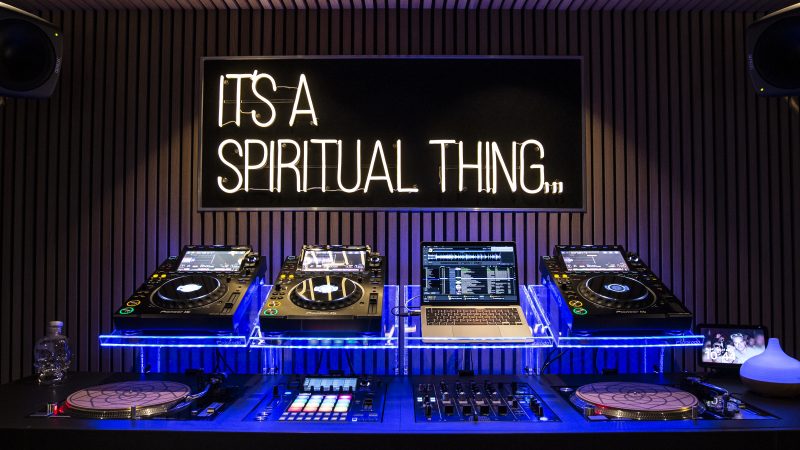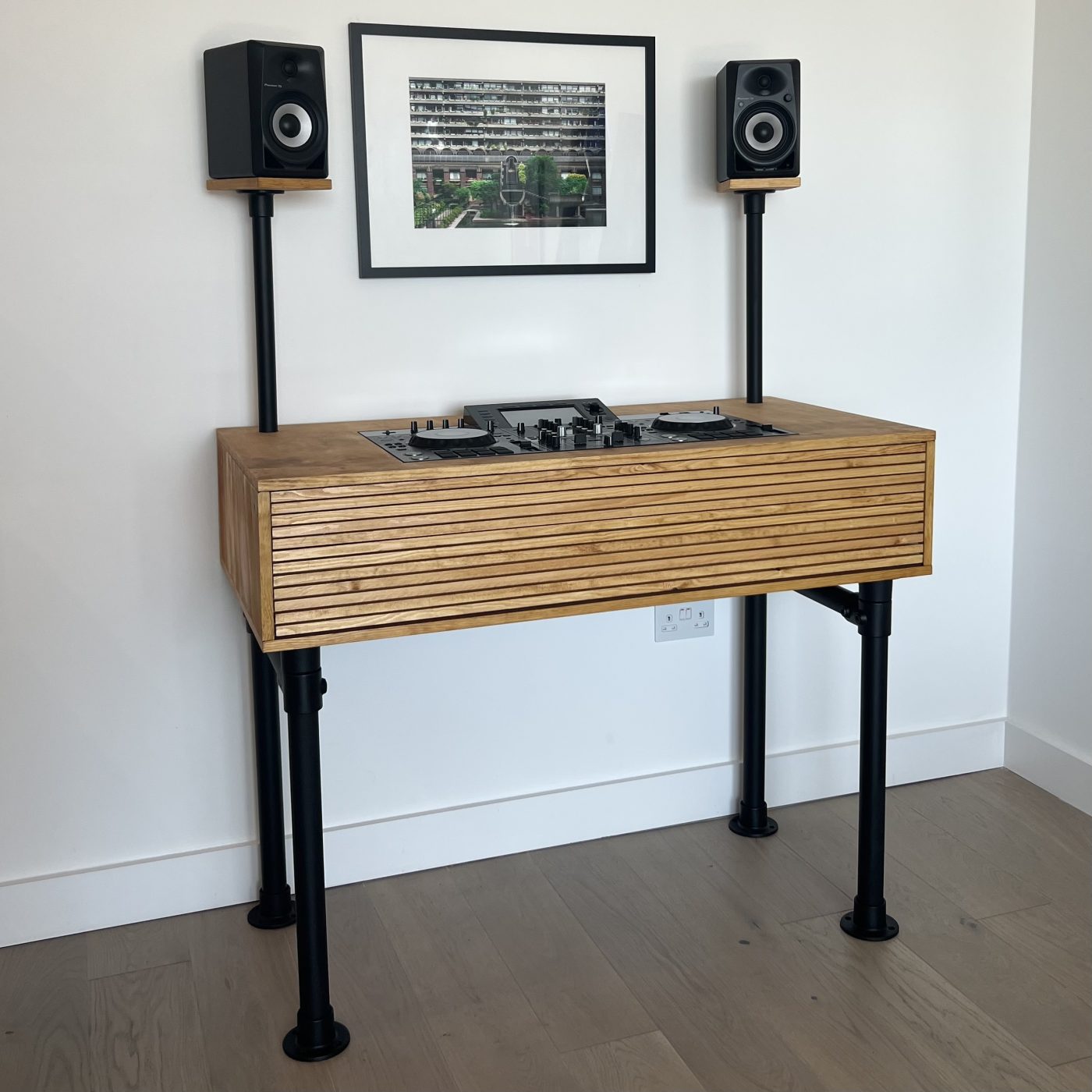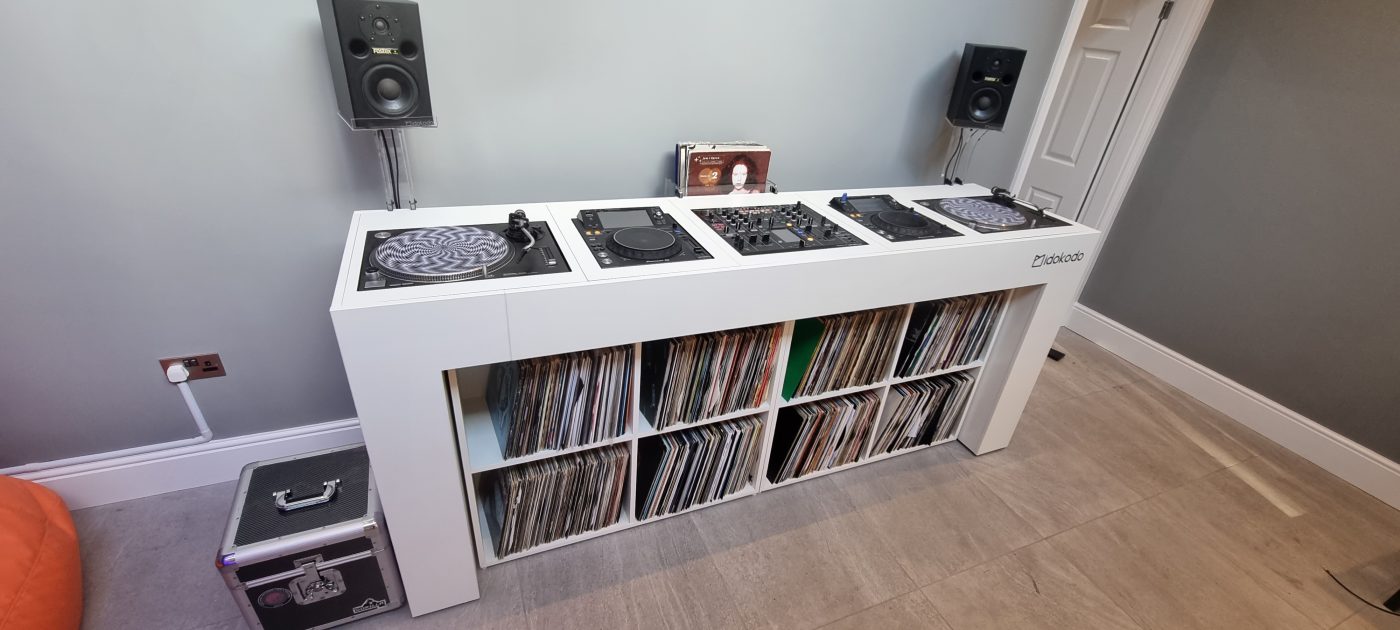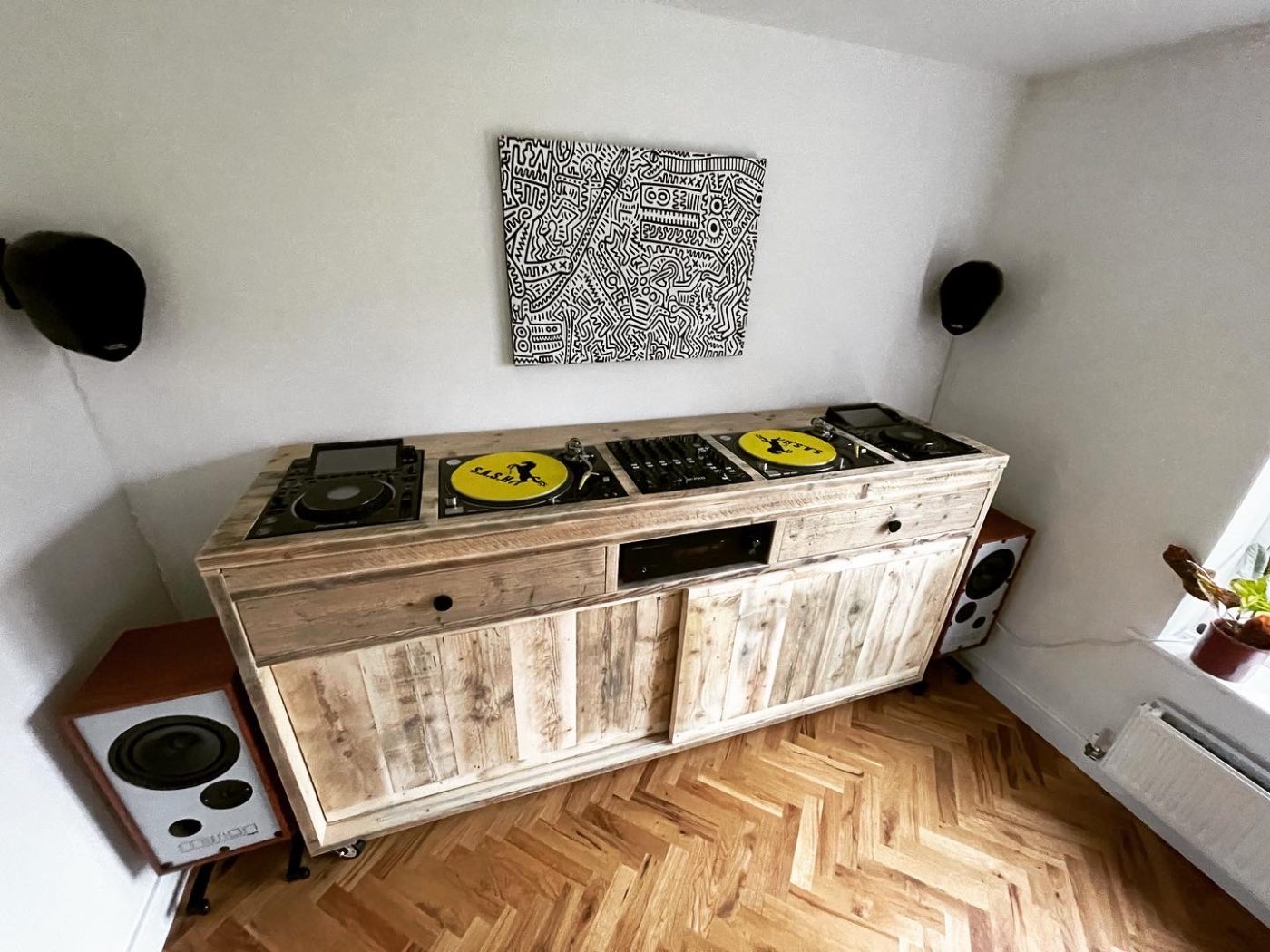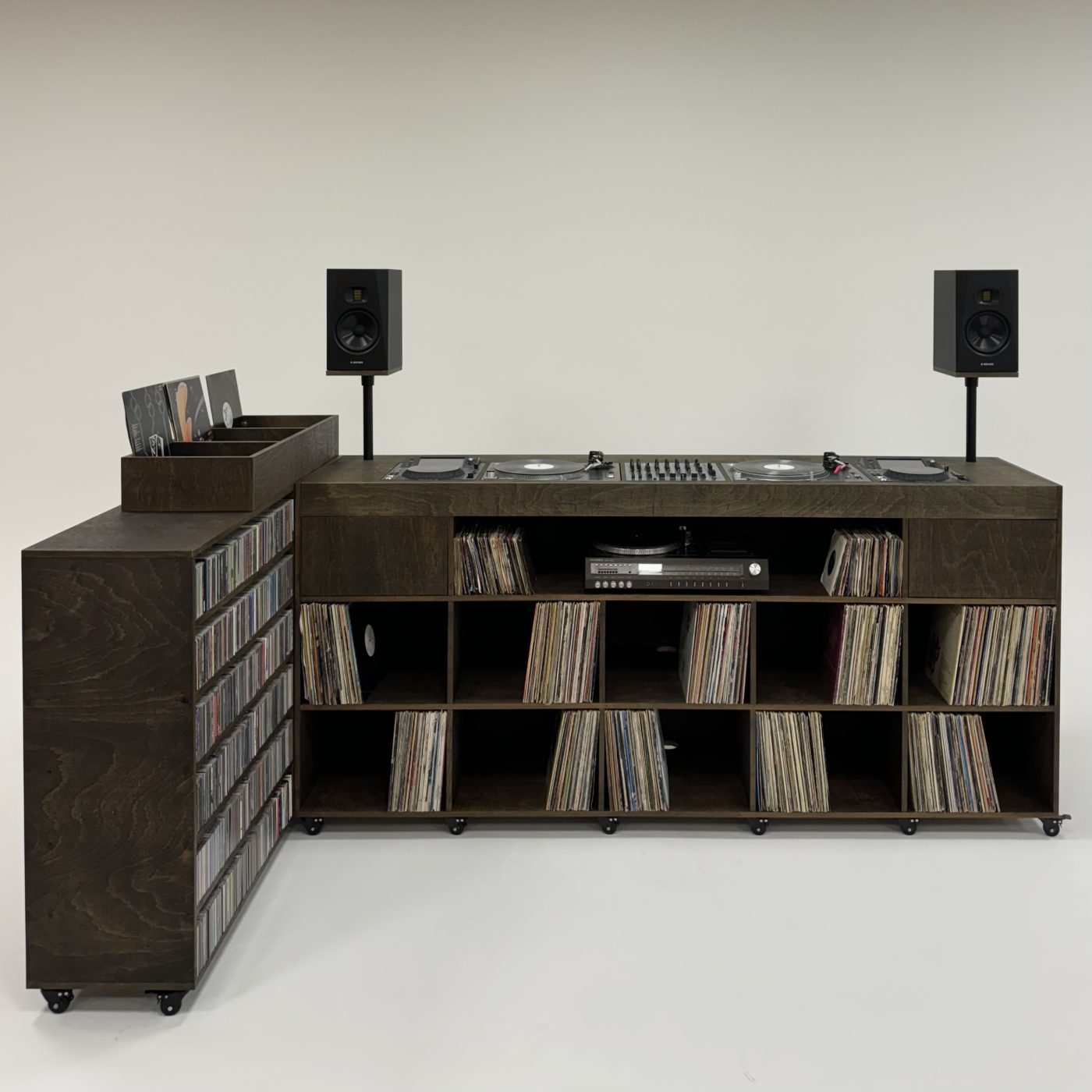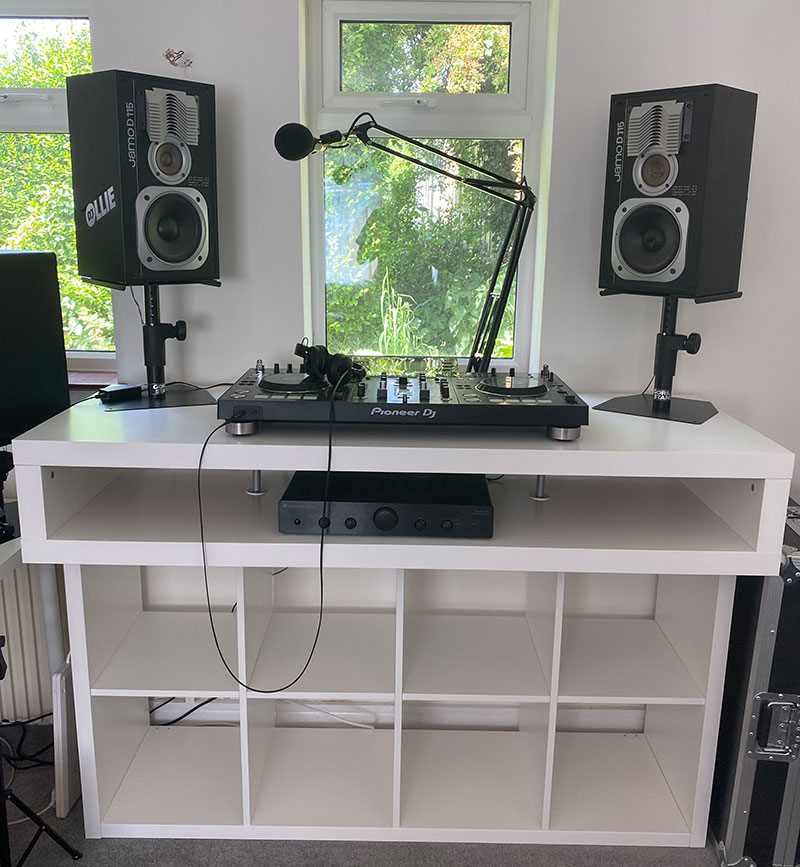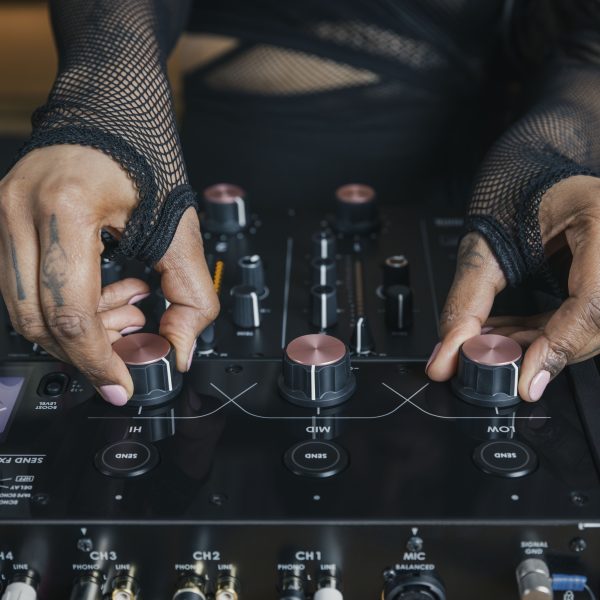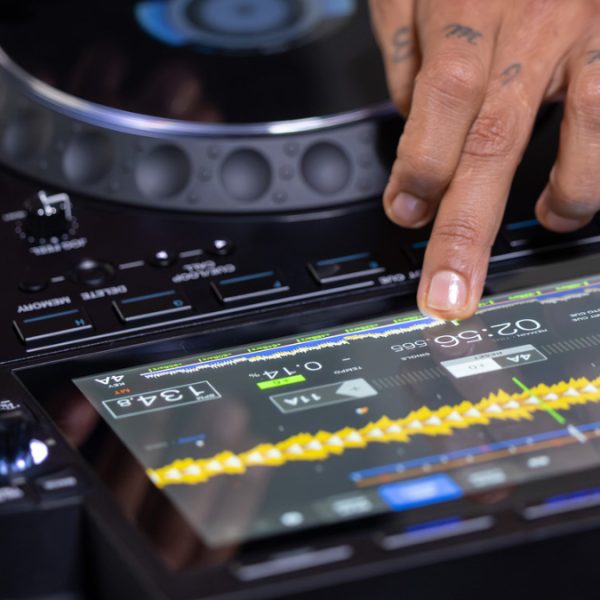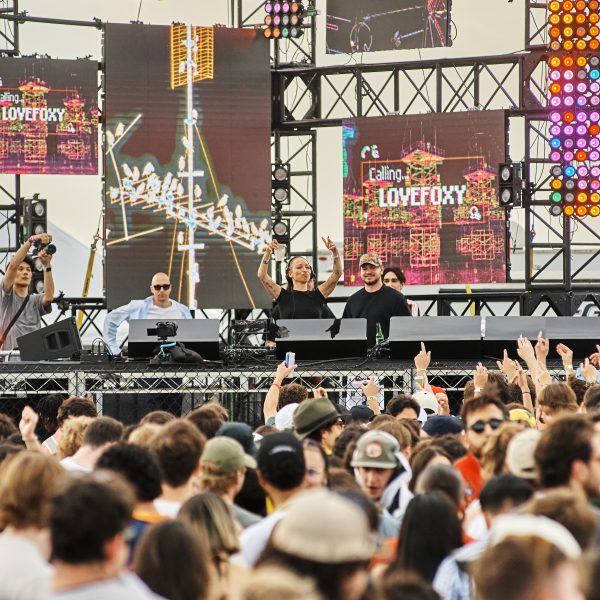Budget booths and hacks
The most popular budget hack is the IKEA Kallax modification. The Kallax shelf unit serves as a nice foundation to build a booth around, with square shelves that are ideal for storing records, and a surface area that can accommodate either two CDJs and a mixer, or two turntables and a mixer.
You can then add another IKEA product, the Lack TV bench, to the top of the Kallax unit. This bench provides a little more space for your equipment and increases the overall height. Combining both items is relatively cheap and creates a rudimentary but aesthetically pleasing home booth. A very similar hack uses products from IKEA’s Capita range. The beauty of this is that it’s 1) very cheap and 2) convenient, while also offering options for various modifications. This will be a low cost and easy entry point for a lot of home DJs, and may end up being the only booth you need.
If you’re on a super tight budget and don’t fancy the IKEA route, there are plenty of cheap options out there. The cheapest “DJ table” we found was just £15, though the jury’s out on how durable an item like this would be. Meanwhile the majority of the off-the-shelf booths available on platforms like Amazon and eBay sit around €200. This gets you a decent-looking platform for your equipment, the kind of product you see hire companies use, but no built-in storage or cable management, and no additional features to accommodate your gear.
Bespoke setups
On the bespoke end, the experts we spoke to were hesitant to reveal the exact cost of their work. Greg at Outhouse quoted a lower-end figure of roughly €1,400 for the new budget option he’s been working on. Don’t forget, working hours alone will cost you more than the €200 you’d pay for a cheap solution. However, even at the lower end of their price range, there’s an unmatched level of quality and attention to detail.
If you’ve already invested thousands into your setup and record collection, then you may also want to invest in a booth that’s going to complement your equipment and living space. “It’s not like a mixer, Technics, and CDJs cost a few hundred quid,” said Russ. “If you’ve got that kit, you’re already a few thousand pounds in. So the people that come to us, they’re confident that a fit-for-purpose, well-designed piece of furniture for a few thousand pounds is money well spent.”
When it comes to the upper tier of booths, you can really go to town. Idokodo, Outhouse By Hand and Lyle Spinback all offer beautifully crafted designs that stand alone as ornate pieces of furniture, while also giving customers a full suite of add-ons, storage options, and innovative design features to ensure an aesthetically pleasing overall finish.
If the sky’s the limit, you could consider following in the footsteps of garage legend DJ Spoony. When he moved into his most recent home, Spoony chose a room from which to broadcast his “Spoony’s House” shows, while also having a space to practise. “I had enough space where I could have a DJ booth and stand on the other side of it, more like I was performing as opposed to facing the wall,” he explained. “So I thought I’d utilise that opportunity and luxury.” After putting a call out on his socials, Spoony got a few offers, most of which were more conventional. In the end, it was a Newcastle-based Stu-Art, with his unique aviation furniture, who caught his attention.
“He makes furniture from old aeroplanes and said he would design one for me,” Spoony said. “He sent me some drawings and came down to the house. So my current DJ booth is actually cut from the side of an aeroplane. If you look at the booth, you can see five windows in the front of it. I’ve even got an actual airline trolley behind the booth where I can keep headphones, USBs and cables and stuff.”
In 2020, Spoony started streaming from his previous home but he had to adapt the space to accommodate cameras and streaming equipment. With the new space, he could incorporate a club-style set up and start from scratch with streaming as the basis of the booth and room design as a whole.
“Going back to my very first setup, I had three milk crates on either side, topped with two square concrete slabs and a bit of black material over the top to keep it looking nice and tidy,” he explained. “When I moved out on my own, a friend of mine designed something for me that was a bit fancy for the times considering… I had my TV and my speakers cut into the front of it and I could walk around the other side where I had my decks.”
“But I can tell you this,” he added. “I think I’ve spent more time thinking about having a beautiful home setup and a really nice DJ booth than I ever did about having a nice car or a nice house. I never look at it and don’t feel grateful and lucky in equal measure that I could have that in my house.”

